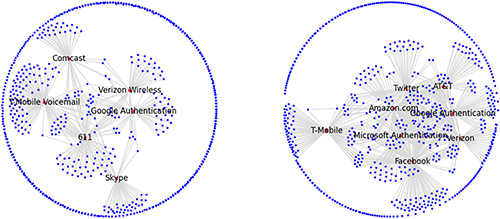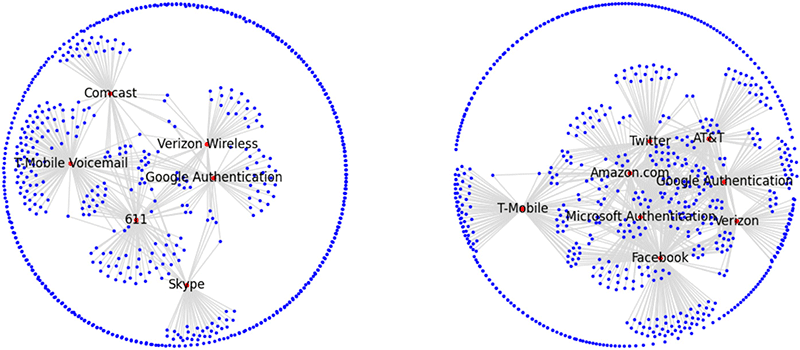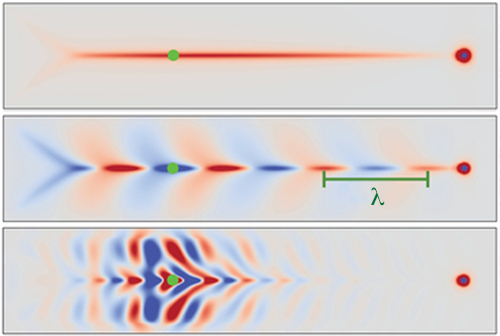Research News: Editors’ Choice
Metadata Monitoring More Invasive than Expected
In the wake of the U.S. National Security Agency’s collection of bulk telecommunications metadata, Mayer et al. report in the Proceedings of the National Academy of Sciences that they have revealed new privacy implications of metadata collection. Recruiting voluntary participants through an Android smartphone application, MetaPhone, the team retrieved historical phone call and text metadata from over 800 users, accounting for more than 200,000 phone calls and 1.2 million text messages. When a participant contacts another number, the metadata of each can be accessed by the NSA through a connection called a “hop.” (At present, rules limit the agency’s surveillance to two hops of metadata retrieval). Despite the anonymity of participants, researchers found that a two-hop path connected many users, caused in part by “hub” numbers (voicemails, telemarketers) that establish a bridge between certain participants when they call or text a hub. Many argue the retrieval of metadata has a lesser privacy impact compared to content disclosure, but the team showed it was trivial to re-identify dataset phone numbers—out of 30,000 randomly selected numbers, 32% of identities were matched using only free, public databases hosted by Yelp, Google Places, and Facebook. When these queries were used to look up more numbers within a two-hop path, the team could identify exchanges with health services or religious institutes, exposing the privacy impacts of surveillance access to metadata.
Channeling Spin Waves
Two research groups have shown that they can control the propagation of spin waves, or magnons, in nanoscale waveguides. Magnons hold promise for logic devices that process information faster and with lower power consumption than electronics. However, until now researchers have not been able to make devices that guide magnons on sufficiently small scales for applications. As described in Nature Nanotechnology, Wagner et al. demonstrated a scheme in which magnons are launched by a microwave antenna and guided through a 40-nanometer-wide channel running along the wall between two magnetic domains on a ferromagnetic strip. In the same issue, Haldar et al. instead used nanolithography to fabricate a chain of 260-nanometer-wide nanoresonators, which can transport magnons generated by a nearby antenna along the chain. Importantly, both schemes are reconfigurable and could thus be used to realize programmable circuits. In the scheme of Wagner et al., a small applied magnetic field alters the position of the domain wall, shifting the waveguide. Haldar et al. use a magnetic field to control the magnetization state of individual resonators in the chain, thereby creating straight and curved spin-wave trajectories.
Potential Nuclear Clock State Discovered in Thorium
A team of physicists have found the first direct evidence for a nuclear state in thorium-229 (Th-229) that has the right emission frequency and lifetime to be the basis for an ultraprecise nuclear clock. Today’s best clocks are based on electronic transitions in atoms, with the second defined as 9,192,631,770 cycles of a cesium emission. Nuclear clocks could be much more accurate because the transitions are insensitive to stray electric fields and radiation. The Th-229 state has been sought for over a decade, but the telling evidence for its existence—an electron kicked out of the atomic shell—proved difficult to detect. As von der Wense et al. report in Nature, they took numerous steps to purify their thorium source and to reduce spurious signals from background electrons. They found that the state’s half-life is over a minute for doubly ionized Th-229 and were able to determine that its energy was between 6.3 and 18.3 eV—a range potentially accessible with lasers, a key requirement for a nuclear clock. Nuclear clocks could be up to 10 times more accurate than atomic clocks, allowing new ways to detect gravitational shifts on Earth or variations in fundamental constants.
Black Holes Are Not Completely Bald
If you toss an encyclopedia into a black hole, is the information destroyed? John Wheeler famously said, “black holes have no hair,” meaning that nothing would be visible from the outside. If this is the case, when a black hole evaporates it would destroy all the information it contains, as Stephen Hawking suggested 40 years ago. Since information loss violates quantum mechanics, this started what is known as the “black hole information paradox.” In a paper in Physical Review Letters, Hawking et al. now suggest that black holes might have “soft hair,” a kind of quantum peach fuzz of low-energy quantum excitations. Among other implications, soft hair would preserve at least a fraction of the information. So far, the work only relates to electromagnetic forces, but the researchers are seeking to extend it to gravity. Although the black hole information paradox remains unresolved, the new results point toward a fresh attack on the problem. (For more, see the Viewpoint “Black Holes Have Soft Hair” by Gary Horowitz.)
Watching Wound Healing Through Bandages
Some wounds, especially burns, must be carefully tended with constant monitoring of the dressing and healing process. This is typically done by visual inspection when the bandage is changed, but these manipulations can cause additional infection or tissue damage. Imaging with terahertz radiation might be one way to nondestructively inspect the wound area, since these frequencies penetrate many materials, especially textiles. In Applied Physics Letters, Suen and Padilla report their comparison of terahertz versus infrared and millimeter wave imaging for noninvasive monitoring of wounds through clinical dressings and topical ointments. They found that, while infrared radiation was strongly attenuated, the terahertz transmission was high for nonaqueous antimicrobial treatments and typical dressings. In addition to burn treatment, the authors suggest that terahertz imaging might also be suitable for monitoring and care of eye wounds and infections.







